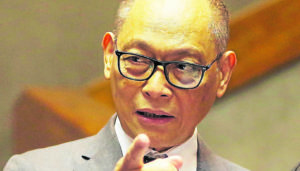Filipinos are increasingly favoring contactless financial transactions as seen in the sustained uptrend in payments using facilities established under the central bank’s framework for electronic money transfers, according to the regulator.
In an online press briefing, Bangko Sentral ng Pilipinas (BSP) Governor Benjamin Diokno said as of end-March this year, the combined volume of transfers of the PESONet platform has reached 39 million, while the value of fund transfers using the InstaPay system has reached P552.3 billion.
These figures represented four times the volume and thrice the value of combined PESONet and InstaPay transactions posted in March 2020, or a year since the pandemic began.
“Social mobility restrictions amid the pandemic have emerged to be a strong catalyst for the wider use of digital payments in the country,” Diokno said.
Throughout all this, Diokno said the BSP also continued to engage the payment services industry led by the Philippine Payments Management Inc. on the provision of safe and efficient payment services.
Under this collaboration, the pilot run of the “QR Ph” system for person-to-merchant payments was rolled out last week. The initiative, which is set to be fully launched in the third quarter of 2021, is expected to benefit small unbanked vendors, tricycle drivers, market vendors and sari-sari store owners.
“We are continuously building capacities for digitalization,” the central bank chief said. “The BSP remains committed to ensuring that every Juan and Maria benefits from an increasingly digital economy, and that no one is left behind as we journey towards a cash-lite society.”
PESONet and InstaPay are automated clearinghouses under the central bank’s National Retail Payments System. PESONet is a batch electronic fund transfer platform, which is an electronic alternative to the paper-based cheque system. On the other hand, InstaPay is a real-time, low value electronic fund transfer platform for transactions up to P50,000, which is useful for e-commerce.
Meanwhile, QR Ph is the national standard that leverages on the efficiency, safety and affordability of the QR technology. It entails code scanning and benefits consumers with faster, easier and cheaper payment options with greater convenience.
Diokno earlier said bank regulators were continuously pursuing initiatives to improve the level of digitalization in the local economy which, in turn, was expected to raise the degree of financial inclusion among Filipinos.
As such, the central bank chief has been urging bankers to back the agency’s digital payments transformation roadmap aimed at raising to 50 percent the number of digital transactions in the country by 2023.


